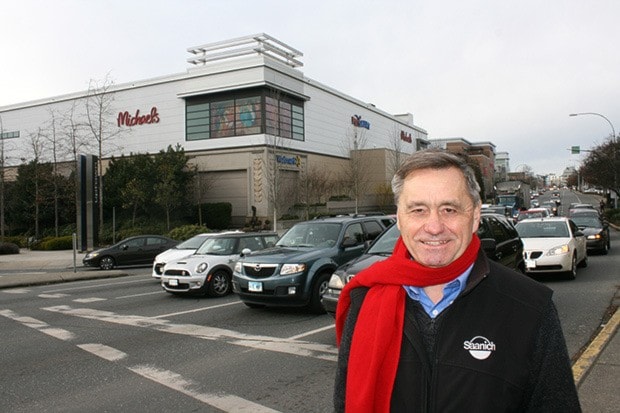Concerns about future urban sprawl has prompted Saanich to oppose passage of a plan that ostensibly proposes to contain growth, but suffers from several defects, according to councillors and staff.
Council last week voted unanimously to oppose final reading of the Regional Growth Strategy (RGS), with Coun. Judy Brownoff absent.
Coun. Fred Haynes said he voted against the RGS because it failed to “suitably” address issues such as affordable housing, transportation and local food production. “How can an RGS not address housing?” he asked.
The RGS also failed to support Saanich’s push for concentrating growth in designated centres and lacked sufficient guidance for a clear regional transportation plan, he said.
The plan also lacked “awareness” about the importance of containing growth and preserving agricultural land for future food security, said Haynes.
“Taken together, these [issues] also lead to a failure to address mitigation of climate change,” he said.
Launched under legislative power the province had granted the Capital Regional District in the mid-1990s, the RGS process commits CRD members to what a Saanich staff report calls “common social, economic and environmental objectives” set to shape the future of the region.
But existing political facts on the ground belie this proposed unity of vision.
Two other CRD communities — Esquimalt and View Royal — had already voted against the RGS when Saanich registered its opposition to the proposed document that would have updated the existing RGS dating back to 2003 in spelling out regional growth until 2038.
This opposition assures the RGS process will undergo a potentially lengthy arbitration process that will attempt to reconcile competing visions for the region, visions that are increasingly diverging as the CRD’s suburban communities such as Langford gain strength and sway through continued growth.
Esquimalt Mayor Barbara Desjardins, who chairs the CRD, said the regional district has struggled to complete this version of the RGS because the region has changed considerably. West Shore communities are “maturing” and “have collectively grown to a size just smaller than Victoria,” she said. “With most of the future growth occurring in this region, they [West Shore communities] will play a greater role in regional governance and decision making.”
Saanich council made the decision after receiving a staff report that reviewed the proposed RGS against the current version.
“In comparison to the existing 2003 Regional Growth Strategy, it would appear that the proposed 2016 Regional Growth Strategy reduces the emphasis on a regional and focused approach to sustainable growth management,” it read. Specifically, the report singles out both proposed changes to land use designations and water servicing rules.
Concerning the former, the report notes that the proposed RGS drops language designed to funnel growth into eight “major centres,” five of which were either completely or partially in Saanich.
“In removing the defined growth hierarchy, the proposed Regional Growth Strategy defers to individual municipal OCPs with respect to where population and employment centres should develop,” it read. “This approach effectively diminishes the significant value of a regionally co-ordinated approach to growth management found in the current Regional Growth Strategy.”
Staff, in other words, is concerned some municipalities will act independently of their neighbours, thereby creating negative spillover effects. The report notes the proposed RGS removes language that explicitly links the region’s growth containment boundary, sewer service and water service.
This deliberate decision “greatly” expands potential areas for water service and with it urban development, a point also noted by Coun. Colin Plant, who also represent the District on the CRD board.
"The proposed criteria for water servicing extensions are insufficient to prevent significant additional development in outlying rural areas that would contribute to transportation issues, increase greenhouse gas emissions and divert development away from land inside the Growth Area boundary," he said.
The report concludes with three recommendations: include measures to identify areas of future growth; limit future water expansion to prevent “additional development” and its effects; and develop a “robust monitoring and adaptation program” regarding climate change
The full CRD board will consider and discuss future steps at its upcoming meeting Feb. 8.
